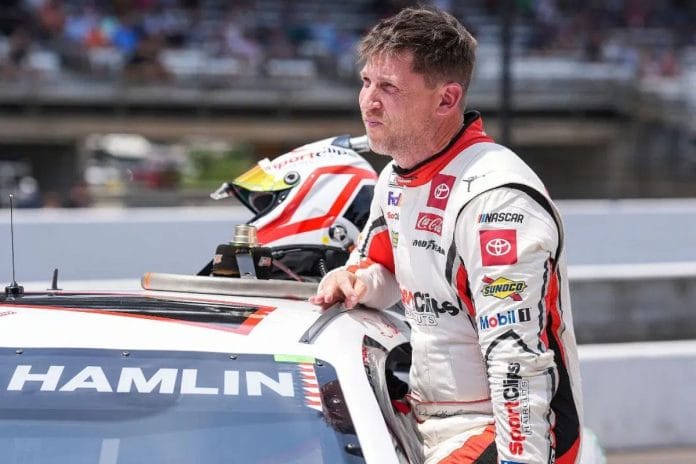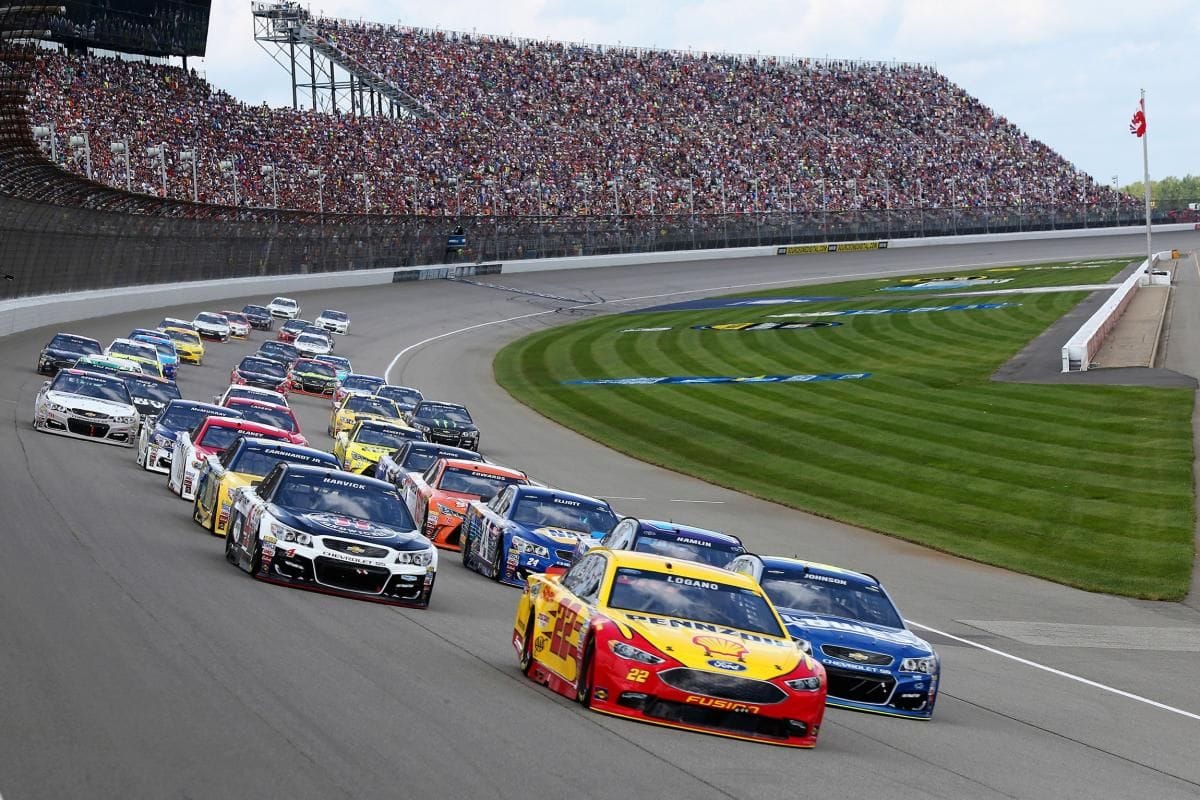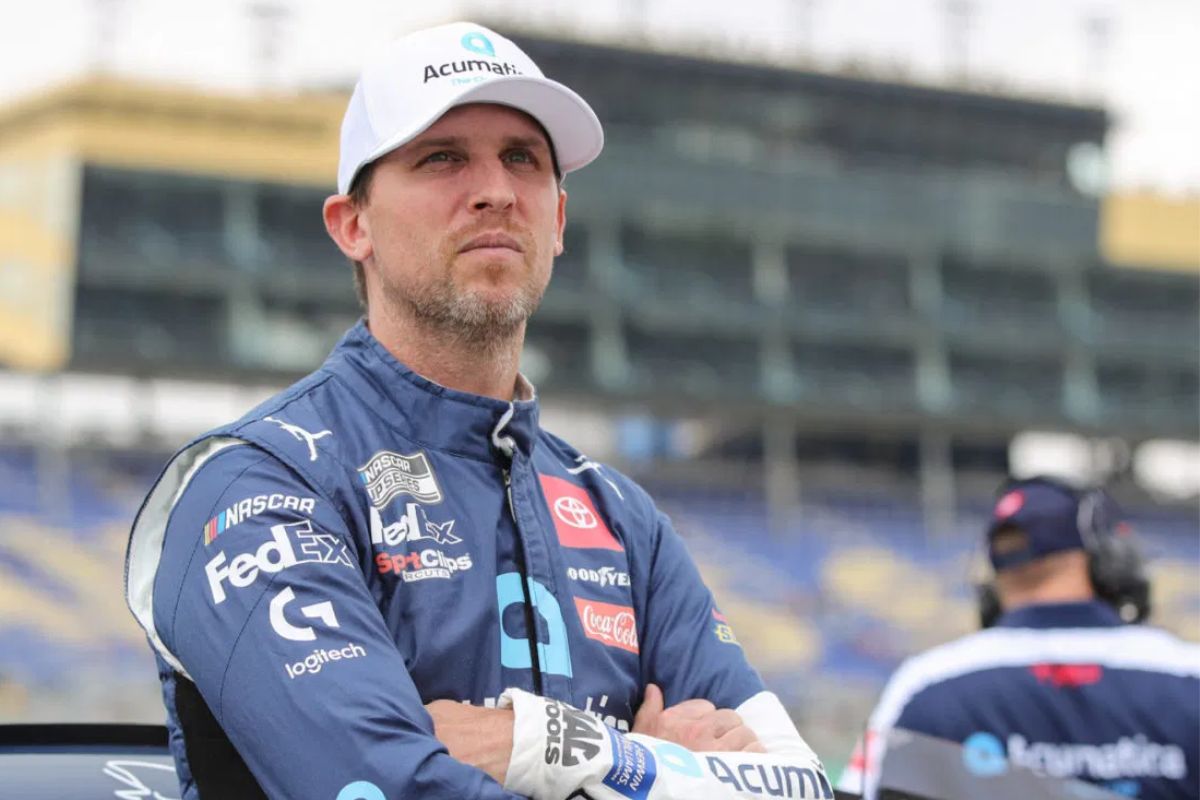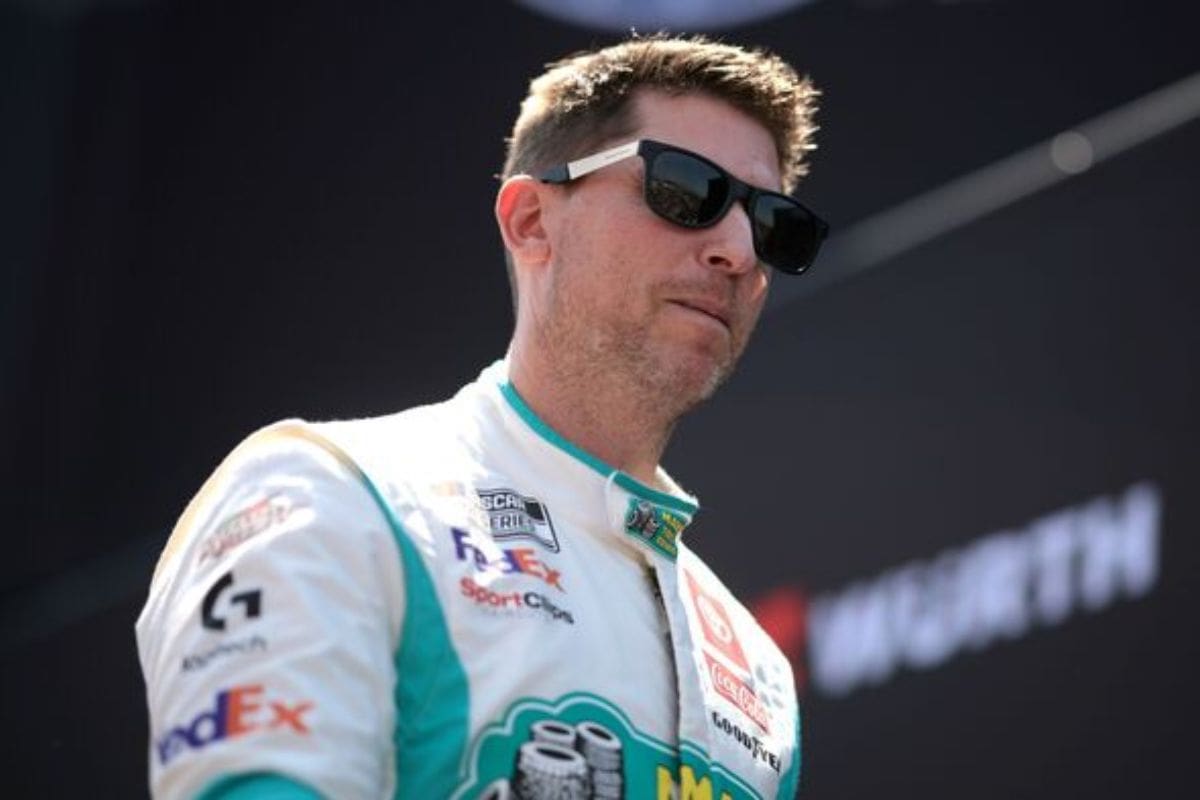Denny Hamlin’s Horsepower Controversy: Denny Hamlin‘s recent call for increased horsepower in NASCAR has sparked a controversial debate that highlights the sport’s evolving dynamics. While supporters argue that higher horsepower could improve overtaking opportunities and replicate the excitement of racing’s golden age, critics raise valid concerns about safety and competitive balance. This discourse is particularly relevant as the upcoming Michigan race approaches, with its potential to reshape future regulations. As the NASCAR community grapples with these diverging perspectives, the implications for the sport’s identity and safety protocols remain uncertain, prompting a closer examination of what lies ahead.
Key Highlights
- Denny Hamlin demands increased horsepower in NASCAR to boost excitement and overtaking opportunities during races.
- The historical peak horsepower of NASCAR was around 900 hp in the late 1990s, dropping to 670 hp with the Next-Gen car.
- Safety concerns arise with higher horsepower, as increased speeds can lead to severe crashes and greater risks for drivers and spectators.
- Driver opinions are mixed; while some support more horsepower, others caution against the potential loss of competitiveness among teams.
- The upcoming Michigan race is seen as pivotal for evaluating the impact of horsepower on racing dynamics and safety protocols.
Horsepower Debate Reignited
As discussions surrounding NASCAR’s competitive landscape evolve, the debate over increasing horsepower has been reignited, particularly given recent events. The rescheduling of the Michigan race has provided the NASCAR community with a unique opportunity to reflect on the ongoing conversation about speed and performance.
Recent developments, especially the chaotic finish at Richmond attributed to a Goodyear tire experiment, have prompted fans and stakeholders to re-evaluate the role that horsepower plays in race outcomes.
Denny Hamlin, a prominent voice in this discourse, argues that elevating horsepower levels could improve the excitement of the races. He suggests that a rise in power may lead to more overtaking opportunities and dynamic driving strategies, thereby enriching the spectator experience.
However, this proposition is not without its critics. Many in the NASCAR community fear that increasing horsepower could increase the current parity among teams, leading to wider performance gaps rather than a more competitive field.
Furthermore, this debate is compounded by nostalgic memories of classic races where horsepower was a decisive factor in determining winners. As fans reminisce about these moments, they also grapple with the implications such changes would have on modern racing dynamics.
Historical Context of NASCAR Horsepower
The debate over horsepower in NASCAR is deeply rooted in the sport’s history, reflecting a balance between thrilling competition and safety concerns. As the years have progressed, the evolution of horsepower levels has mirrored the ongoing struggle between exhilarating speed and the imperative of driver safety.
Historically, NASCAR vehicles boasted staggering horsepower figures, with levels once peaking at around 900 hp in the late 1990s. However, a gradual decline began in the early 2000s, driven largely by safety initiatives and regulations. This reduction saw horsepower levels stabilize around 750 hp before a notable drop to 670 hp with the introduction of the Next-Gen car in 2022. This latest change ignited fervent discussions within the NASCAR community, particularly among drivers demanding a return to higher horsepower.
Despite officials emphasizing the financial implications and the appeal to potential new manufacturers, many, including notable drivers like Denny Hamlin, argue that the thrill of racing lies in speed. They contend that simply reinstating higher horsepower could be achieved with minimal logistical hurdles.
2014 Michigan Race and High Horsepower
Excitement swirled around the Michigan race as fans and drivers reminisced about the exhilarating speeds witnessed a decade ago. The FireKeepers Casino 400 event has reignited discussions about high horsepower, a topic that has long been a focal point in NASCAR’s evolution.
In 2014, the Michigan International Speedway became a testing ground for high-performance racing, with NASCAR officials experimenting with configurations that allowed cars to reach unprecedented speeds.
A notable highlight from that year was the special test session held shortly after Jeff Gordon’s victory, where cars reportedly achieved speeds exceeding 225 mph entering Turn 1. This remarkable feat showed the raw power of the vehicles and marked a consequential moment in NASCAR history, as it represented a departure from restrictive measures that had been in place for decades.
“August 18, 2014: One day after Jeff Gordon won at Michigan, NASCAR held a special test session at the track, trying high horsepower and small spoilers. It was said that cars were reaching 225+ mph into turn 1. 🤯” – (Nascarman)
August 18, 2014: One day after Jeff Gordon won at Michigan, NASCAR held a special test session at the track, trying high horsepower and small spoilers. It was said that cars were reaching 225+ mph into turn 1. 🤯 pic.twitter.com/qVRFGzxzkI
— nascarman (@nascarman_rr) August 18, 2024
The track record fell four times during the qualifiers, resulting in Gordon’s astonishing lap of 206.558 mph, a benchmark that showed the potential for speed in the sport.
The 2014 race was a reflection of the capabilities of NASCAR vehicles during the pre-restrictor plate era, as 32 of the 43 cars clocked in above the 200 mph mark—a rare occurrence that highlights the allure of high horsepower.
This nostalgic reflection is vital for understanding the ongoing debate surrounding speed and performance, especially as figures like Denny Hamlin advocate for a return to such exhilarating dynamics in the sport.
Driver Opinions and Fan Reactions
Several drivers have expressed strong opinions regarding the resurgence of horsepower in NASCAR, aligning themselves with Denny Hamlin‘s call for increased speed. This sentiment is echoed by prominent figures such as two-time Cup Champion Joey Logano, who emphatically stated, “We want more horsepower.
Kevin Harvick has even demanded a bold leap to 1000 horsepower, showing a growing consensus among drivers that higher performance could improve the racing spectacle.
Despite the push for increased horsepower, veteran driver Jeff Gordon provided an intriguing perspective. He noted that while the throttle response and cornering speeds may be exhilarating, the sensation of speed on straightaways does not markedly change due to the high-speed cornering dynamics. This complex view highlights the depth of the debate, suggesting that simply increasing horsepower may not deliver the expected thrill to drivers.
“I know that I’ve gotten a tremendous amount of throttle in it and I’m carrying a lot of speed, but at the same time, when you’re carrying that much speed through the corners you don’t feel like you’re going that fast down the straightaways. There’s not a big acceleration or change.” – (gordon)
Fan reactions have mirrored the drivers’ sentiments, with many enthusiasts expressing nostalgia for the high horsepower days of NASCAR. Comments such as “This is the NASCAR I want” and reflections on how the sport has “strayed so far” in the past decade indicate a yearning for a return to more powerful machines.
“10 years later we have strayed so far 🥲” – (fan reaction)
Furthermore, one fan’s enthusiastic declaration of “High horsepower and low downforce“ captures a prevalent desire among the fanbase for a racing experience that emphasizes speed and driver skill.
Safety Concerns and Future Prospects
As discussions about horsepower intensify among drivers and fans, safety concerns arise over the potential push for increased speeds in NASCAR. The tragic incidents in recent races highlight the risks associated with high-speed racing, raising questions about the viability of further enhancing vehicle performance.
- Increased crash severity: Higher speeds lead to more violent collisions, increasing the risk of severe injuries.
“This would be cool to see, but you can’t have Cody Ware, Corey LaJoie, or Spinhouse on the track at those speeds. Major safety issue.” – (fan reaction)
- Driver experience: Not all drivers possess the same skill level; increased speeds could challenge less experienced racers, potentially endangering everyone on the track.
- Vehicle stability: The NextGen car’s sensitivity to aerodynamic shifts raises concerns about its ability to maintain control at extreme velocities.
“Imagine the insanity of this package being used in a real race.” – (fan reaction)
- Mechanical limitations: Technical issues within NASCAR’s current framework may hinder the implementation of higher horsepower standards safely.
“Hey thats pretty good, shame reasons they can’t actually do it for real.” – (fan reaction)
- Fan safety: The risks extend beyond the drivers; higher-speed racing increases the likelihood of incidents that could endanger spectators.
Fans have expressed skepticism about the practicality of pushing for more horsepower amidst these concerns. Commentators have noted that the mechanical challenges in achieving this safely are profound.
A notable incident involving Ryan Sieg, whose car was launched into the air during a recent race, has fueled fears about the consequences of racing at extreme speeds.
“They sent someone to space wrecking at 165 yesterday and people are seriously asking if they’re gonna let them reach 220+ again lol. Especially with the NextGen that has goofy air physics once it slightly gets off the ground.” – (fan reaction)
News in Brief: Denny Hamlin’s Horsepower Controversy
The ongoing discourse surrounding Denny Hamlin’s demand for increased horsepower represents the multifaceted challenges faced by NASCAR. Balancing the desire for thrilling competition with safety considerations remains paramount. As the Michigan race approaches, the outcomes may serve as a crucial crossroads for future regulations regarding horsepower.
The divergent perspectives from drivers, teams, and fans emphasize the complexity of this issue, highlighting the need for an extensive approach that addresses performance improvement and safety in motorsport.
ALSO READ: Denny Hamlin Rages Against NASCAR’s Heavy-Handed Approach Using Chase Elliott’s Case




